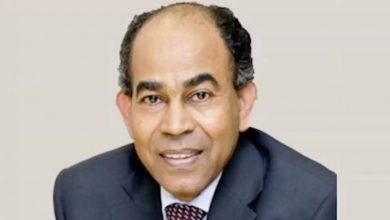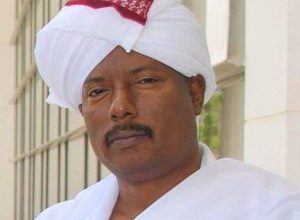Opinion
Sudanese Islamists: What They Couldn’t Achieve and How They Rise Again (2–6)

By Dr. Al-Dardiri Mohamed Ahmed
(On the Idea and Methodology)
The early Sudanese Islamists, such as Ali Talib Allah and graduates of Egypt in the 1940s, were more influenced by the goals of the Muslim Brotherhood in Egypt than by the unique ideas and objectives we previously outlined in the first installment of this series. The founders of the Sudanese Islamic movement were nurtured by the Egyptian Brotherhood’s organizational structure and approach. But what exactly was the Brotherhood’s vision, and how did Sudanese Islamists diverge from it?
Restoring the Islamic Caliphate occupied a central position in Hassan al-Banna’s ideology and the goals of the Muslim Brotherhood. Al-Banna viewed the fall of the Ottoman Caliphate as a disaster for Muslims, leading to the fragmentation of the Islamic Ummah and its colonization. Thus, he deemed the restoration of the Caliphate both a religious duty for Muslims and essential for reviving the power of Islam and its state. In his foundational text, The Fifth Conference Message, Al-Banna described the Caliphate as “a symbol of Islamic unity, a manifestation of the bond between the nations of Islam, and a religious obligation observed by Muslims since the time of their Prophet, peace be upon him.”
However, Al-Banna did not advocate for an immediate or direct restoration of the Caliphate, unlike groups like ISIS. Instead, he envisioned it as the culmination of a series of stages beginning with reforming the individual, then society, and finally the state. He stated, “The Muslim Brotherhood places the idea of the Caliphate and the effort to restore it at the forefront of their agenda, believing it to be among their duties as Muslims.”
This pivotal idea resonated with Islamists in Egypt, the Levant, and North Africa, who had long historical ties to the Caliphate. However, this experience was largely absent in Sudan. Historically, Sudan had never been directly governed by the Ottoman Caliph in Istanbul. While there was a brief period of nominal Ottoman dominance (1821–1824) through Muhammad Ali Pasha, Sudan was subsequently governed as part of Muhammad Ali’s Egyptian state, which was effectively independent of Istanbul.
Rather than perceiving that period as an embodiment of the righteous Islamic Caliphate or a symbol of Islamic unity, Sudanese people viewed it as a time of oppression and colonial exploitation. They considered the “Turkish period” to be a bitter colonial experience, far from being an “Islamic obligation.” Many Sudanese even rejected its Islamic character, labeling it “infidel” due to its political and administrative practices that contradicted Islamic principles. This sentiment fueled the Mahdist revolution, whose fervor remained alive among its supporters until relatively recent times.
Thus, the central idea of the Muslim Brotherhood had little appeal to Sudanese Islamists outside those influenced by Egypt. Over time, as Professor Hassan Mekki, a leading historian of the Sudanese Islamic movement, observed, “The Egyptian current within Sudan failed to sustain itself. Some of it dissolved into the liberation movement, while the rest faded with waning enthusiasm and the severing of ties with Egypt.”
Sudanese Islamists also lacked enthusiasm for aligning with the Egyptian Brotherhood, especially during a time when Sudan was under Anglo-Egyptian rule and its national movement was split between unionists and separatists. The question of ties to the Egyptian Brotherhood remained contentious until the 1954 Eid Conference, which partially resolved the issue by deciding to retain the Brotherhood’s name but reject subordination to the Egyptian movement.
In the 1960s, the emergence of Dr. Hassan al-Turabi as a prominent figure in 1964 introduced additional factors that accelerated the complete departure from the Egyptian model. Al-Turabi realized that to address Sudan’s unique political and social challenges, Sudanese Islamic leadership had to tailor its vision to local circumstances. Consequently, he advocated for “gradual coordination” rather than direct allegiance to the international organization. His vision, detailed in The Intellectual and Practical Foundations for the Unity of Islamic Work, emphasized that “each nation is most familiar with its circumstances and is best suited to adapt the broader Islamic vision to its particular context.”
Al-Turabi also urged Islamists in each country to respect their local specificities without being blindly bound to global frameworks or falling prey to narrow localism. This opened the door to developing a distinct Sudanese ideological, political, and organizational vision tailored to Sudan’s unique challenges.
The Sudanese movement adopted a more flexible approach compared to the traditional methods of the Muslim Brotherhood. For instance, it maintained relations with various Sudanese political forces, including ruling regimes. Such flexibility was inconceivable within the international Brotherhood framework, which avoided even engaging with non-Islamic media outlets. Sheikh Yusuf al-Qaradawi recounted how some Brotherhood members criticized him for publishing his works in non-Islamic media, reflecting the Brotherhood’s rigid outlook on societal engagement.
In contrast, al-Turabi summarized the Sudanese movement’s divergence from this rigidity by stating, “We refused to be a movement alongside society, isolated and engaging only in debates and polemics. Instead, we aimed to be the movement of society itself, engaging with its context, resisting its evils, and building on its virtues.”
While the Egyptian Brotherhood viewed society as an object of transformation with the organization as the transformative tool, the Sudanese movement saw society as both the object and the agent of reform. This difference in approach fundamentally shaped their respective trajectories.
The Sudanese Islamic movement, under al-Turabi’s leadership, emphasized renewal and adaptation, distinguishing itself from the rigid ideology of the Egyptian Brotherhood. Al-Turabi championed reinterpreting Islamic texts with a contemporary perspective, addressing issues like women’s rights, governance, and the application of Islamic penalties in modern times. For him, the revival of Islam in Sudan was impossible without a renewal of Islamic thought.
This divergence reflects broader differences between ideological rigidity and pragmatic flexibility. The Egyptian Brotherhood adhered to a long-term, ideological framework that often distorted reality, as philosopher Paul Ricoeur criticized about ideologies. Conversely, the Sudanese movement prioritized practical engagement with society, drawing lessons from experience and history while avoiding a dogmatic approach.
As we continue to explore the evolution of the Sudanese Islamic movement, the next installment will delve into its organizational aspects.



